The kitchen is often considered the heart of the home, a place where meals are prepared and families gather. However, it is also a place where many harmful materials can be found. These materials can range from chemicals used in cooking to toxic surfaces and appliances.
Understanding the definition of these harmful materials and the importance of reducing exposure to them is crucial for maintaining a healthy non-toxic kitchen environment.
Harmful materials can cause harm to human health or the environment. This can include chemicals used in cooking, such as Bisphenol A (BPA) and Phthalates, as well as toxic materials used in kitchen surfaces and appliances, such as Lead and Formaldehyde.
Understanding these harmful materials is important because prolonged exposure to these substances can lead to serious health problems, including reproductive and developmental issues, cancer, and endocrine disruption.
It is also important to consider the impact on the environment, as some of these harmful materials in the kitchen can harm human life and contribute to the overall pollution of the planet.
This article will provide an overview of the most common harmful materials found in the kitchen, including chemicals used in cooking and toxic kitchen surfaces and appliances.
Kitchen Chemicals Used in Cooking
In the modern kitchen, many chemicals are used to enhance the cooking and food preservation process. However, some of these chemicals can harm human health if not used or stored properly. Understanding the health effects of these chemicals and taking steps to minimize exposure is essential.
Some of the most common kitchen chemicals include Bisphenol A (BPA), Phthalates, and Perfluoroalkyl Substances (PFAS).
BPA is commonly found in plastic food containers, water bottles, and the lining of canned goods. Phthalates are commonly found in food packaging and food processing equipment. PFAS are commonly found in non-stick cookware, food packaging, and water-repellent clothing.
Exposure to BPA and Phthalates can lead to reproductive and developmental issues and endocrine disruption. PFAS has been linked to liver toxicity, reduced fertility, and cancer.
To minimize exposure to these harmful materials in the kitchen, it is recommended to use glass, stainless steel, or ceramic containers instead of plastic containers.
Additionally, avoiding non-stick cookware and choosing alternative materials, such as cast iron, stainless steel or ceramic, can help to reduce exposure to PFAS.
By taking steps to minimize exposure, individuals can reduce their risk of developing health problems and protect their families from the harmful effects of these chemicals.
1. Bisphenol A (BPA)
Bisphenol A (BPA) is a chemical commonly used in the production of plastic and is commonly found in food and beverage containers, water bottles, and the lining of canned goods.
Understanding BPA and the potential health effects of exposure is important for maintaining a healthy home environment.
Studies have linked BPA exposure to a range of health problems, including reproductive and developmental issues, endocrine disruption, and an increased risk of cancer. Some studies have also shown that BPA exposure can lead to behavioral and neurological problems in children.
To reduce BPA exposure in the kitchen, it is recommended to use glass, stainless steel, or ceramic containers instead of plastic containers. When purchasing canned goods, it is important to look for BPA-free products.
By taking steps to reduce exposure, individuals can help to protect themselves and their families from the harmful effects of this chemical.
2. Phthalates
Phthalates are a group of chemicals commonly used in the production of plastics and personal care products.
These chemicals can be found in a wide range of products commonly used in the kitchen, making it important to understand their potential health effects and take steps to minimize exposure. Phthalates can also be found in personal care products, such as shampoos, lotions, and fragrances.
Studies have linked Phthalate exposure to a range of health problems, including reproductive and developmental issues, endocrine disruption, and an increased risk of cancer. Some studies have also shown that Phthalate exposure can lead to behavioral and neurological problems in children.
To reduce Phthalate exposure in the kitchen, it is recommended to use glass, stainless steel, or ceramic containers. When purchasing food, it is important to look for Phthalate-free products and choose products packaged in glass or paper instead of plastic.
3. Perfluoroalkyl Substances (PFAS)
Perfluoroalkyl Substances (PFAS) are a group of synthetic chemicals commonly used in the production of non-stick cookware and food packaging. Understanding PFAS and the potential health effects of exposure is important for maintaining a healthy home environment.
PFAS can be found in a wide range of products in the kitchen, including non-stick cookware, food packaging, and stain-resistant coatings. PFAS can also be found in some water supplies and the environment due to industrial activities.
Studies have linked PFAS exposure to a range of health problems, including reproductive and developmental issues, endocrine disruption, and an increased risk of cancer. Some studies have also shown that PFAS exposure can lead to behavioral and neurological problems in children.
To reduce PFAS exposure in the kitchen, it is recommended to avoid using non-stick cookware and to choose alternative materials, such as cast iron or stainless steel. Additionally, it is recommended to limit the use of stain-resistant products and to choose alternatives that do not contain PFAS.
Harmful Kitchen Materials and Surfaces
In addition to the chemicals used in cooking, there are a number of other materials and surfaces in the kitchen that can pose a health risk if not handled properly.
Understanding these materials and the potential health effects of exposure is important for maintaining a healthy and safe home environment.
Some of the most common harmful materials and surfaces found in the kitchen include lead-based paint, asbestos in older homes, and certain types of granite.
These materials can release harmful substances into the air or food, increasing the risk of exposure and potential health problems.
Exposure to harmful materials and surfaces in the kitchen can have a range of negative health effects, including respiratory problems, neurological damage, and an increased risk of certain types of cancer.
The health effects of exposure can depend on a number of factors, including the length of time and frequency of exposure, as well as the age and overall health of the individual.
To minimize exposure to harmful materials and surfaces in the kitchen, it is important to take a number of steps, including using proper ventilation, avoiding the use of lead-based paint, and choosing alternative materials and surfaces when possible.
Additionally, it is important to seek professional help when dealing with hazardous materials or surfaces, such as asbestos or lead-based paint.
1. Lead
Lead is a toxic metal that can have serious health effects if not properly managed and handled. While lead is commonly associated with older homes and buildings, it can also be found in various other products and materials, including some in the kitchen.
Some of the most common lead sources in the kitchen include lead-based paint, ceramic glaze on dishes, and lead in drinking water.
In older homes and buildings, lead-based paint can be found on walls, cabinets, and other surfaces and can pose a serious health risk if it is disturbed or disturbed during renovation or other home improvement projects.
Lead exposure can have a range of negative health effects, including developmental problems, reduced IQ, and an increased risk of certain types of cancer.
The health effects of lead exposure can depend on a number of factors, including the length and frequency of exposure and the individual’s age and overall health.
To reduce lead exposure in the kitchen, it is important to take several steps, including using only lead-free dishes and cookware, avoiding lead-based paint, and regularly testing drinking water for lead.
If lead-based paint is present in the home, it is recommended to have it removed by a professional and to follow all safety guidelines during the removal process. Using a water filtration system is also important to remove lead from drinking water if it is detected.
Another way to reduce lead exposure in the kitchen is to opt for natural, lead-free materials when choosing kitchen products and surfaces.
This may include using bamboo cutting boards instead of plastic ones or choosing stainless steel or cast iron cookware instead of non-stick pans.
2. Formaldehyde
Formaldehyde is a chemical commonly used in various household and industrial products, including some found in the kitchen.
It is commonly used in a variety of products, including adhesives, resins, and building materials. Formaldehyde is also used as a disinfectant and preservative in some medical and laboratory settings.
Some of the most common sources of formaldehyde in the kitchen include particleboard, MDF, and pressed wood products. Formaldehyde can also be found in certain types of kitchen cabinets, countertops, and flooring.
In addition, it may be present in some cleaning products, air fresheners, and other household products.
Exposure to formaldehyde can have a range of negative health effects, including respiratory problems, eye, nose, and throat irritation, headaches, and skin rashes.
In addition, long-term exposure to formaldehyde has been linked to an increased risk of certain types of cancer, such as nasopharyngeal cancer and leukemia.
To reduce formaldehyde exposure in the kitchen, it is important to choose kitchen products and surfaces with low levels of formaldehyde or that do not contain formaldehyde.
This may include using solid wood or engineered wood products instead of particleboard or MDF or choosing kitchen cabinets and countertops made from natural materials, such as stone or granite.
In addition, it is important to use proper ventilation when using products that contain formaldehyde, such as cleaning products or air fresheners.
This may include opening windows or using exhaust fans to improve airflow and reduce exposure to formaldehyde fumes.
Toxic Kitchen Items To Be Replaced With Non-Toxic Products
In today’s world, it is important to be aware of the materials and items we use in our kitchens, as many of them may contain harmful chemicals that can leach into our food and cause health problems.
Let’s discuss 8 toxic kitchen items you should replace with non-toxic utensils for your health and the environment.
1. Non-Stick Cookware
Non-stick cookware is commonly made with a chemical called Perfluoroalkyl Substances (PFAS), which is a known carcinogen. When exposed to high heat, PFAS can release toxic fumes that are harmful to humans and animals. If you want to remove non-stick cookware, we recommend you to use non-toxic cookware.
Best Non-Toxic Cookware

Comfify Owl Utensil Holder Decorative Ceramic Cookware Crock
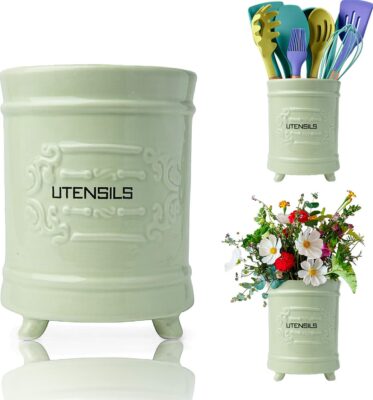
French Green Ceramic Utensil Holder
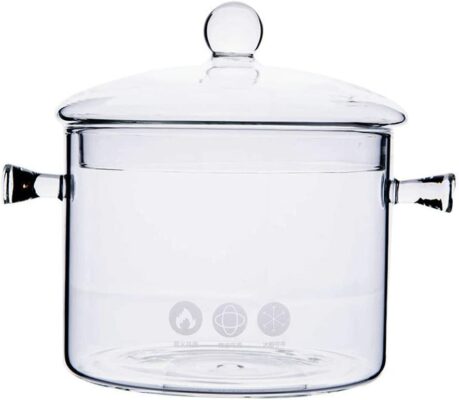
KINO Glass Clear Pasta Instant Noodle Pot

Pyrex Basics Clear Glass Baking Dishes
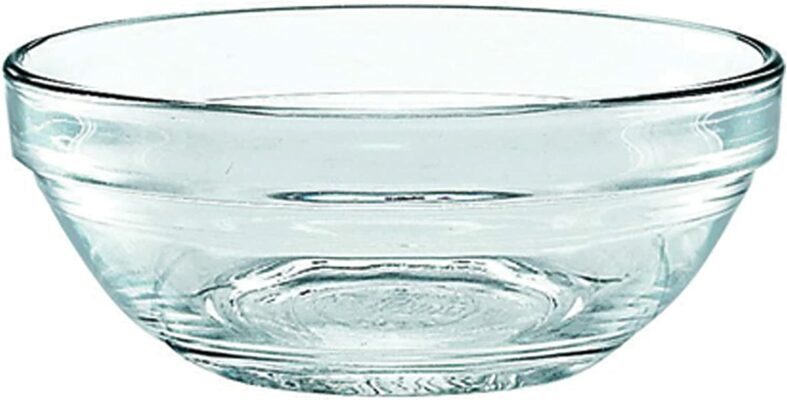
Duralex Stacking Bowl
2. Food Storage Containers
Many food storage containers, particularly those made from plastic, contain harmful chemicals like Bisphenol A (BPA) and phthalates. These chemicals can leach into food and drinks, particularly when heated, and can cause a range of health problems.
We recommend using non-toxic food storage containers to protect yourself and your family from the negative health effects of these harmful materials.
Best Non-Toxic Food Storage Solutions
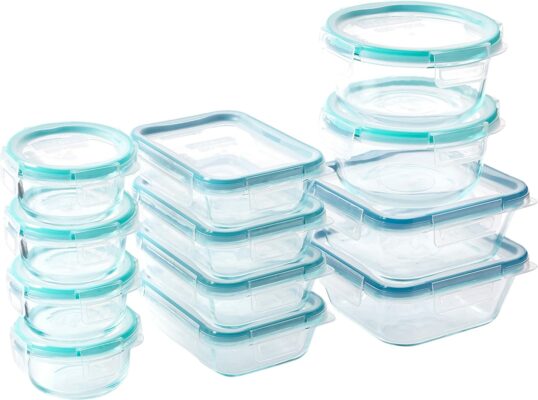
Snapware Total Solution Glass Food Storage Container
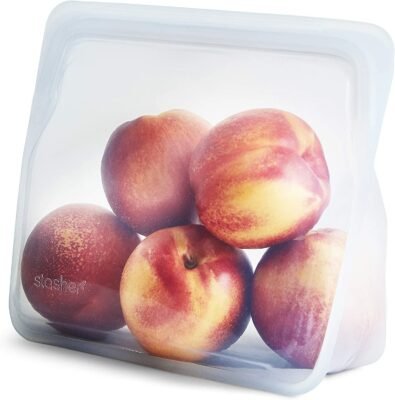
Stasher Silicone Reusable Container
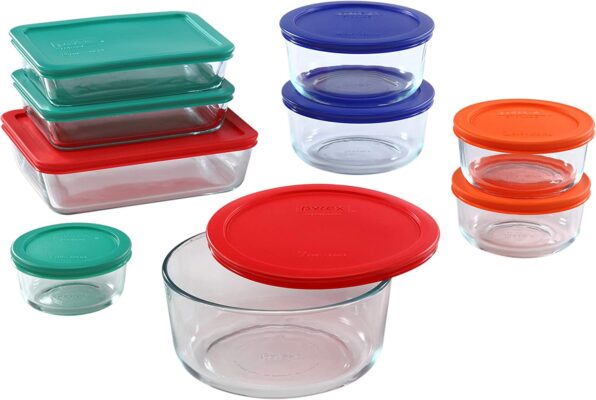
Pyrex Simply Store 18-Pc Glass Food Storage Containers
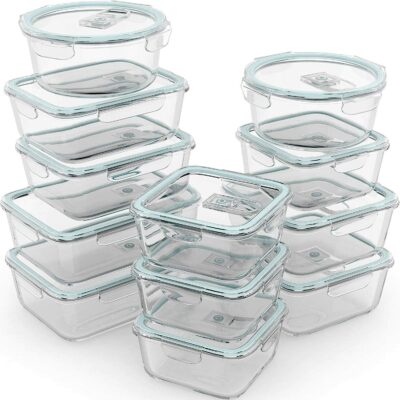
Razab 24 Pc Glass Food Storage Containers

OGGI Jumbo Stainless Steel Flour Clamp Canister
3. Glassware
While glass is generally considered a safe and healthy alternative to plastic, some glassware can contain lead, which can leach into food and drinks, especially when exposed to acidic substances.
4. Cutting Boards
Cutting boards, particularly those made from plastic, can contain harmful chemicals like BPA, phthalates, and PFAS. Over time, these chemicals can leach into food, particularly when the cutting board is used frequently and subjected to high heat.
5. Nylon Cooking Utensils
Nylon cooking utensils, particularly those that are not labeled as “heat-resistant,” can release toxic fumes when exposed to high heat. These fumes can be harmful to humans and animals and can cause a range of health problems.
6. Canned Foods
Canned foods can contain a chemical called bisphenol-A (BPA), which is used in the lining of many canned foods. BPA is a known endocrine disruptor and has been linked to a range of health problems, including reproductive and developmental problems, heart disease, and cancer.
7. Plastic Wraps
Plastic wraps, particularly those made from PVC, can contain harmful chemicals like phthalates, which can leach into food and drinks, particularly when heated. Plastic wraps can contain harmful chemicals such as phthalates, which can leach into food. Instead, opt for wax paper, aluminium foil, or food-grade silicone covers.
8. Single-Cup Coffee Pods
Single-cup coffee pods, particularly those made from plastic, can contain harmful chemicals like BPA and phthalates. Over time, these chemicals can leach into coffee and risk human health. Single-cup coffee pods are convenient but can contain harmful chemicals such as lead and plastic residues.
By being mindful of these toxic kitchen items and reducing exposure, it is possible to create a healthier and safer kitchen environment for yourself and your family.
Consider replacing these items with safer alternatives, such as ceramic or stainless steel cookware, glass food storage containers, and wood cutting boards, and limit your exposure to harmful chemicals in the kitchen.
Conclusion
Harmful materials in the kitchen can have serious health effects if they are not properly managed and handled.
From kitchen chemicals used in cooking, such as Bisphenol A (BPA), Phthalates, and Perfluoroalkyl Substances, to harmful kitchen materials and surfaces, such as Lead and Formaldehyde, it is important to understand the sources and potential health effects of these materials.
Given the potential health effects of exposure to harmful materials in the kitchen, it is important to take steps to reduce exposure and protect oneself and one’s family from potential harm.
This may include choosing kitchen products and surfaces with low levels of harmful chemicals, using proper ventilation when using kitchen chemicals, and regularly cleaning and maintaining kitchen surfaces to reduce the build-up of harmful chemicals.
